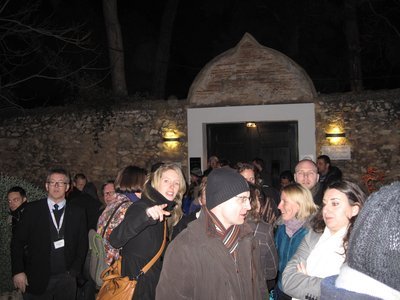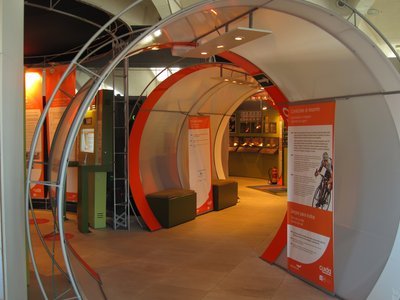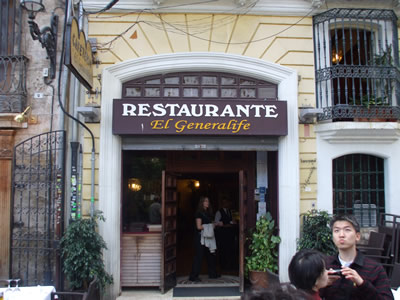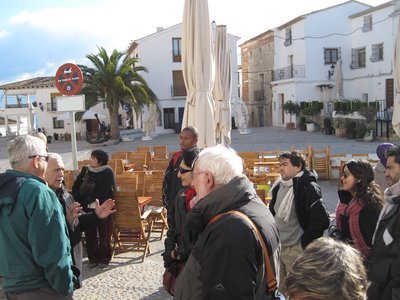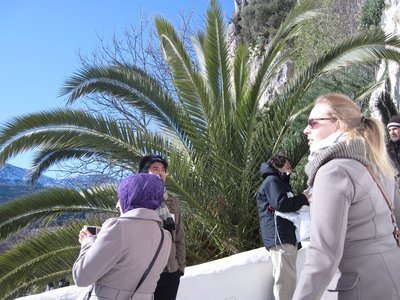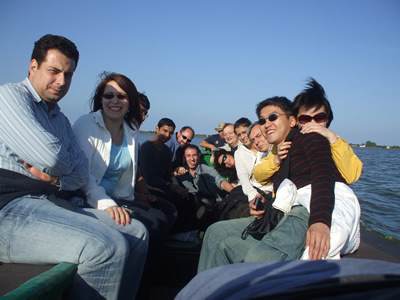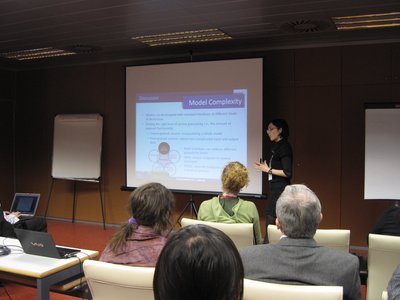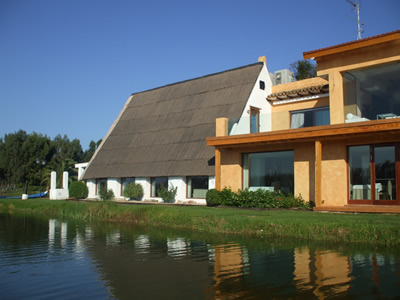WIRELESS ANALYTICS 2024 - The First International Conference on Wireless and Telecommunications
November 17, 2024 - November 21, 2024
WIRELESS ANALYTICS 2024: Call for Papers
Onsite and Online Options: In order to accommodate various situations, we are offering the option for either physical presence or virtual participation (pdf slides or pre-recorded videos).
Wireless systems and telecommunications systems are driven by the increasing integration of technologies and advancements in network connectivity and infrastructure.
The main target of the event is to provide analytics on the state of the art and tendencies considering several aspects related to technology, equipment, energy, processing, and manageability with a large spectrum of services:
- Technology: mmWave, IoT, 5G/6G, slicing, smart spectrum sensing, dynamic spectrum allocation, adaptive-energy, wireless powering, etc.
- Equipment: Drone-based services, self-vehicular systems, ultra-reliability and low-latency, low-powered devices, wearable devices, etc.
- Energy and communication: Energy, energy harvesting, energy storage, signal processing, cognitive communication and monitoring, antennas, etc.
- Processing: Big data, optimization, validation, scheduling, testbeds, emergency services, accuracy, resiliency, etc.
- Manageability: Reliability, optimization, provisioning, QoS.
WIRELESS ANALYTICS 2024 inaugurates a series of events dedicated to analyzing solutions and challenges concerning dedicated frameworks, architectures, applications, software/ and hardware, tools and apps, experimental systems, and lessons learned pertaining to the above desiderata.
We solicit both academic, research, and industrial contributions. We welcome technical papers presenting research and practical results, position papers addressing the pros and cons of specific proposals, such as those being discussed in the standard fora or in industry consortia, survey papers addressing the key problems and solutions on any of the above topics short papers on work in progress, and panel proposals.
Industrial presentations are not subject to the format and content constraints of regular submissions. We expect short and long presentations that express industrial position and status.
Tutorials on specific related topics and panels on challenging areas are encouraged.
The topics suggested by the conference can be discussed in term of concepts, state of the art, research, standards, implementations, running experiments, applications, and industrial case studies. Authors are invited to submit complete unpublished papers, which are not under review in any other conference or journal in the following, but not limited to, topic areas.
All topics and submission formats are open to both research and industry contributions.
WIRELESS ANALYTICS 2024 conference tracks:
PHY, MAC, MIMO and cross-layering fundamentals
Modulation, coding, equalization, and synchronization
Interference modeling, cancellation, and alignment
Signal processing for wireless communications
Cross-layer MAC design
Wireless MAC protocols for 5G/6G
Software defined radio, RFID MAC
QoS support and energy efficient MAC
MAC protocol for energy harvesting wireless networks
PHY strategies for low-rate, sporadic and asynchronous communications
Channel modeling
Cognitive radio, smart spectrum sensing and dynamic spectrum access
Cross-layer optimization in cognitive networks
Content caching and storage in wireless networks
MIMO, massive MIMO and cloud-RAN
Cooperative, device-to-device and multi-hop communication
PHY layer design for cellular, wireless LAN, ad hoc and sensor networks
Energy efficient and energy harvesting PHY layer design
Joint information and energy transmission
PHY layer security and privacy, ultra-wideband, mmWave and sub-THz communication
MAC protocol for energy harvesting wireless, cellular/small cell networks and cloud-RAN
MAC protocols for nano networks and mmWave networks
mmWave protocols design and adoption
Cross-layer design for massive MIMO and multiuser MIMO networks
Energy Power Transfer and Signal Processing
Energy harvesting and sustainable future powering
Economic benefits from wireless power transfer
Wireless powering of ultra-low-power-devices
Low-power wireless technologies for IoT (6LoWPAN, ZigBee, LoRa)
Near-field (inductive, resonant) power transfer
Power management and power electronics
Coils, resonators, ferrites, modeling, simulation, and design
Static and dynamic wireless charging
Directional and omni-directional wireless power transfer
Antenna systems, propagation, and RF design
Multiple antenna systems and cooperative communications
Energy allocation, energy efficiency and adaptive power
Smart Grid and powering of electric vehicles
Drones wireless powering
Energy topologies in smart cities
Energy-cooperative networks
Wireless and Telecommunications Networks
Wireless routing and discovery
Radio access technology and heterogeneous networks
Software-defined mobile/wireless networks
Wireless Network Functions Virtualization
Virtual network management and orchestration
Cooperative wireless networks
Vehicular communication networks
Mesh, relay, sensors, and ad hoc networks
Optical, overlay, and peer-to-peer networks
Wireless sensor networks
Mobile cloud, fog computing, mobile edge computing and networking
Neutral host architectures and disaggregation (ORAN and vRAN)
mmWave, THz, VLC networking
Multi-band wireless
IoT, M2M, Sensor networks, and ad hoc networking
IoT ultra-dense networks
Multi-tenant 5G networks
Cognitive radio and networking
Mobile backhaul networks
Big Data enabled Self-Organized Networking
Mobile big data and network data analytics
Integrated Wireless/Optical networks
Mobility, location, and handoff management
Multimedia QoS and traffic management
Wireless broadcast, multicast, and streaming
Congestion and admission control
User-centric and wireless body area networks
Mobile social networks
Wireless network measurements and characterization
Satellite-based mobile access and backhaul
Hybrid satellite-terrestrial networks
Wireless Applications and Services
Home/industrial wireless applications industries
Mobile/wireless network support for vertical hnadoffs
Wireless sensing, remote sensing, and satellite-terrestrial communications
High-sped transportation and 5G
5G and satellite integration (towards 6G)
Wireless for UAV
Software defined Networks (SND), NFV (network Function Virtualization)
Slicing. Service Function Chaining (SFC)
Transportation and vehicular wireless communications
Wireless-based services (healthcare, news, national alarms, special-needs transportation)
Drone communication, monitoring, and control
Artificial Intelligence (AI) with Machine Learning (ML) in wireless applications
Mobile, wearable, and implantable personal devices
Dynamic sensor networks for urban applications
Wireless localization services (e.g., wireless powering on roadways, emergency, etc.)
Cooperative localization
High altitude platforms and satellites
Emergency wireless communications
Wireless real-time communications
Biomedical implants and medical devices
Adaptive content distribution in on-demand services
Context and location-aware wireless services and applications
User-centric networks and adaptive services
Wireless body area networks and e-health services
Smart and adaptive transportation systems
Challenges, Optimizations and Validations
Hybrid licensed/unlicensed spectrum access schemes
Technologies, architectures, and enabling business models for rural communications
Wireless emergency and security systems
Large-scale wireless communications
Ultra-reliable communications
Wireless network security and privacy
High performance communication and reliability in wireless networks
Ultra-reliability and low-latency wireless networks
Handover optimization and mobility management
Self-tuning handover mobile networks with dense small cells
Handling partial connections
C-band 5G Growth, 5G-NR dedicated networks
5G mmWave for V2I and V2V
5G ultra-reliable low-latency communications
Managing 5G slice-based environments
Near-Space communications
Efficient resource management and optimization
Cross-layer optimization under reliability and energy constraints
Provisioning V2X services
Regulations, Control, and Tools
Space regulations
Automated frequency coordination
Green wireless communications
Fairness in Wi-Fi and LTE-U coexistence
Coexistence in unlicensed mmWave bands
Modeling and monitoring time-limited capacity wireless channels
Automatic orchestration of the 5G deployments
Control of discontinuous transmission
Enabling regulations, standards, and spectrum management
Testbed and prototype implementation of wireless services
Conversational AI in Telecom Industry
Wireless Networks Datasets
Graph Representation Learning for Networks
Deadlines:
Submission | Sep 16, 2024 |
Notification | Oct 10, 2024 |
Registration | Oct 20, 2024 |
Camera ready | Oct 25, 2024 |
Deadlines differ for special tracks. Please consult the conference home page for special tracks Call for Papers (if any).
INSTRUCTION FOR THE AUTHORS
Authors of selected papers will be invited to submit extended versions to one of the IARIA Journals.
Publisher: XPS (Xpert Publishing Services)
Archived: ThinkMindTM Digital Library (free access)
Prints available at Curran Associates, Inc.
How to submit to appropriate indexes.
Only .pdf or .doc files will be accepted for paper submission. All received submissions will be acknowledged via an automated system.
Contribution types
- regular papers [in the proceedings, digital library]
- short papers (work in progress) [in the proceedings, digital library]
- ideas: two pages [in the proceedings, digital library]
- extended abstracts: two pages [in the proceedings, digital library]
- posters: two pages [in the proceedings, digital library]
- posters: slide only [slide-deck posted on www.iaria.org]
- presentations: slide only [slide-deck posted on www.iaria.org]
- demos: two pages [posted on www.iaria.org]
FORMATS
Only .pdf or .doc files will be accepted for paper submission. All received submissions will be acknowledged via an automated system.
Final author manuscripts will be 8.5" x 11", not exceeding 6 pages; max 4 extra pages allowed at additional cost.
Helpful information for paper formatting for MS Word can be found here.
There is a community provided LaTeX template: the CTAN package iaria (with full IARIA formatting rules, including IARIA citation style, but for providing citation style it is tightly bound to pdflatex+biblatex+biber). In addition, there is also iaria-lite (not bound to pdflatex+biblatex+biber, but compatible with any TeX stack; thus, it cannot provide the IARIA citation formattings, but only the titlepage and content-related IARIA formatting rules). Based on the iaria package, there is a minimal working example as Overleaf template. When you are using the LaTeX templates, please still adhere to the additional editorial rules.
Slides-based contributions can use the corporate/university format and style.
Your paper should also comply with the additional editorial rules.
Once you receive the notification of contribution acceptance, you will be provided by the publisher an online author kit with all the steps an author needs to follow to submit the final version. The author kits URL will be included in the letter of acceptance.
We would recommend that you should not use too many extra pages, even if you can afford the extra fees. No more than 2 contributions per event are recommended, as each contribution must be separately registered and paid for. At least one author of each accepted paper must register to ensure that the paper will be included in the conference proceedings and in the digital library, or posted on the www.iaria.org (for slide-based contributions).
CONTRIBUTION TYPE
Regular Papers (up to 6-10 page article -6 pages covered the by regular registration; max 4 extra pages allowed at additional cost- ) (oral presentation)
These contributions could be academic or industrial research, survey, white, implementation-oriented, architecture-oriented, white papers, etc. They will be included in the proceedings, posted in the free-access ThinkMind digital library and sent for indexing. Please submit the contributions following the instructions for the regular submissions using the "Submit a Paper" button and selecting the appropriate contribution type. 12-14 presentation slides are suggested.
Short papers (work in progress) (up to 4 pages long) (oral presentation)
Work-in-progress contributions are welcome. These contributions represent partial achievements of longer-term projects. They could be academic or industrial research, survey, white, implementation-oriented, architecture-oriented, white papers, etc. Please submit the contributions following the instructions for the regular submissions using the "Submit a Paper" button and selecting the contribution type as work in progress. Contributors must follow the conference deadlines, describing early research and novel skeleton ideas in the areas of the conference topics. The work will be published in the conference proceedings, posted in the free-access ThinkMind digital library and sent for indexing. For more details, see the Work in Progress explanation page. 12-14 presentation slides are suggested.
Ideas contributions (2 pages long) (oral presentation)
This category is dedicated to new ideas in their very early stage. Idea contributions are expression of yet to be developed approaches, with pros/cons, not yet consolidated. Ideas contributions are intended for a debate and audience feedback. Please submit the contributions following the instructions for the regular submissions using the "Submit a Paper" button and selecting the contribution type as Idea. Contributors must follow the conference deadlines, describing early research and novel skeleton ideas in the areas of the conference topics. The work will be published in the conference proceedings, posted in the free-access ThinkMind digital library and sent for indexing. For more details, see the Ideas explanation page. 12-14 presentation slides are suggested.
Extended abstracts (2 pages long) (oral presentation)
Extended abstracts summarize a long potential publication with noticeable results. It is intended for sharing yet to be written, or further on intended for a journal publication. Please submit the contributions following the instructions for the regular submissions using the "Submit a Paper" button and selecting the contribution type as Extended abstract. Contributors must follow the conference deadlines, describing early research and novel skeleton ideas in the areas of the conference topics. The work will be published in the conference proceedings, posted in the free-access ThinkMind digital library and sent for indexing. 12-14 presentation slides are suggested.
Posters (paper-based, two pages long) (oral presentation)
Posters are intended for ongoing research projects, concrete realizations, or industrial applications/projects presentations. The poster may be presented during sessions reserved for posters, or mixed with presentation of articles of similar topic. A two-page paper summarizes a presentation intended to be a POSTER. This allows an author to summarize a series of results and expose them via a big number of figures, graphics and tables. Please submit the contributions following the instructions for the regular submissions using the "Submit a Paper" button and selecting the contribution type as Poster Two Pages. Contributors must follow the conference deadlines, describing early research and novel skeleton ideas in the areas of the conference topics. The work will be published in the conference proceedings, posted in the free-access ThinkMind digital library and sent for indexing. 8-10 presentation slides are suggested. Also a big Poster is suitable, used for live discussions with the attendees, in addition to the oral presentation.
Posters (slide-based, only) (oral presentation)
Posters are intended for ongoing research projects, concrete realizations, or industrial applications/projects presentations. The poster may be presented during sessions reserved for posters, or mixed with presentation of articles of similar topic. The slides must have comprehensive comments. This type of contribution only requires a 8-10 slide-deck. Please submit the contributions following the instructions for the regular submissions using the "Submit a Paper" button and selecting the contribution type as Poster (slide-only). The slide-deck will be posted, post-event, on www.iaria.org.
8-10 presentation slides are suggested. Also a big Poster is suitable, used for live discussions with the attendees, additionally to the oral presentation.
Presentations (slide-based, only) (oral presentation)
These contributions represent technical marketing/industrial/business/positioning presentations. This type of contribution only requires a 12-14 slide-deck. Please submit the contributions following the submission instructions by using the "Submit a Paper" button and selecting the contribution type as Presentation (slide-only). The slide-deck will be posted, post-event, on www.iaria.org.
12-14 presentation slides are suggested.
Demos (two pages) [posted on www.iaria.org]
Demos represent special contributions where a tool, an implementation of an application, or a freshly implemented system is presented in its alfa/beta version. It might also be intended for thsoe new application to gather the attendee opinion. A two-page summary for a demo is intended to be. It would be scheduled in special time spots, to ensure a maximum attendance from the participants. Please submit the contributions following the submission instructions by using the "Submit a Paper" button and selecting the contribution type as Demos. The Demos paper will be posted, post-event, on www.iaria.org.
Tutorial proposals
Tutorials provide overviews of current high interest topics. Proposals should be for 2-3 hour long. Proposals must contain the title, the summary of the content, and the biography of the presenter(s). The tutorial slide decks will be posted on the IARIA site.
Please send your proposals to tutorial proposal
Panel proposals
The organizers encourage scientists and industry leaders to organize dedicated panels dealing with controversial and challenging topics and paradigms. Panel moderators are asked to identify their guests and manage that their appropriate talk supports timely reach our deadlines. Moderators must specifically submit an official proposal, indicating their background, panelist names, their affiliation, the topic of the panel, as well as short biographies. The panel slide deck will be posted on the IARIA site.
Please send your proposals to panel proposal
